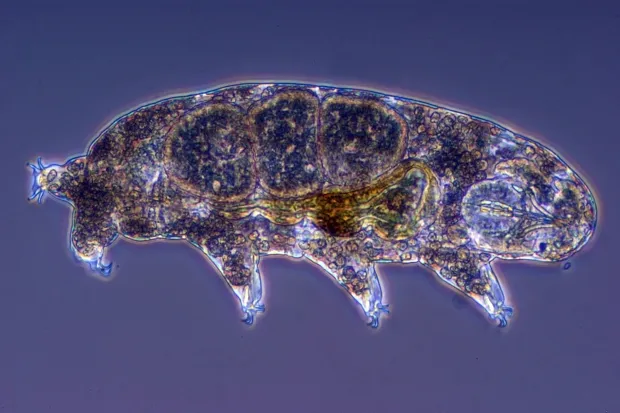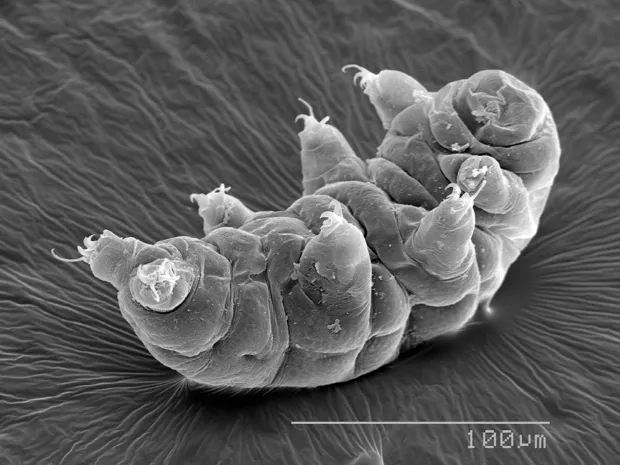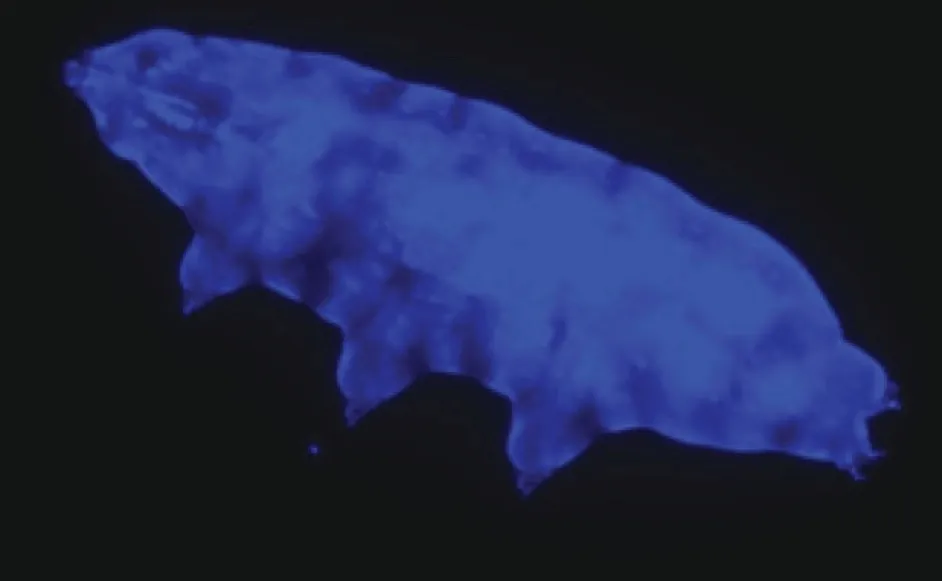You only have to take one look at a tardigrade to know that you're dealing with a pretty unusual critter - they look like the offspring of the hookah-smoking caterpillar from Disney's Alice in Wonderland and a vacuum cleaner bag. But, as researchers have discovered throughout the years, their curious appearance is only just the beginning. Here are a few of our favourite facts about one of the Earth's most intriguing animals.
1
Tardigrade means ‘slow paced’
Tardigrades are also known as water bears or moss piglets, but the actual word 'tardigrade' means ‘slow paced’. It was originally an adjective applied to tortoises, but since 1800 it has been the name of these microscopic creatures.
2
Size isn't everything
At only about 0.5mm long, tardigrades aren't big, but they can be found around the world in a wide range of environments.
3
Hardy-grades
Tardigrades can cope with extreme high and low temperatures that would kill other organisms. Some species can survive exposure to -272.15°C, while others can withstand temperatures of up to 150°C, albeit only for a short time.
Read more animal facts:
- Cannibal animals: 10 gruesome examples of animals eating each other
- Nine things you didn't know about dogs, according to science
- Meet the mantis shrimp, your new favourite animal
4
What do tardigrades eat?
Tardigrades eat bacteria, plants, or even other tardigrades. They pierce individual cells of their prey and suck out the contents for nutrients. Delicious!
5
Safety in numbers
There are something like 1,300 currently known species of tardigrade. They belong to the group of animals known as ecdysozoa, which also includes insects, crustaceans, and nematodes.
6
They don't crack under pressure
Tardigrades can also survive immense pressures, up to six times that on the ocean floor, or even being boiled in alcohol.
7
You think you're thirsty...
If a tardigrade is dehydrated and loses up to 99 per cent of its water content, its living processes can be near-suspended for several years before being brought back to life. In its dehydrated state, it is known as a ‘tun’. A tun’s metabolism lowers to as little as 0.01 per cent of its original rate.
8
Blowin' in the wind
A tun can be carried on the wind, like a seed or spore. If it lands in a habitable environment, it can asexually reproduce and start a new colony.

9
Tardigrades can live in space (sort of)
In 2007, dehydrated tardigrades were taken up into orbit and exposed to the vacuum and radiation of space for 10 days. On return to Earth, over two-thirds of them were successfully revived. Many died relatively soon after, but were still able to reproduce beforehand. Of course, this does not mean tardigrades are aliens.
10
They are 'glass half full' kind of creatures
Inside the cells of dehydrated tardigrades, a type of protein called ‘tardigrade-specific intrinsically disordered protein’ (TDP) replaces the water. This forms a glass-like substance that keeps the cell structures intact.

11
Water bears' genes could be the future of food
Yeast and bacteria can be protected from dehydration by encoding into them the tardigrade genes for producing TDPs. This method could be used to produce crops that can survive droughts or medication that doesn’t need refrigeration.
12
Eight legs good
The hind pair of a tardigrade’s eight legs are attached backwards, and are used for grasping objects.
13
I will survive!
Tardigrades are among the few animals to have lived through all of our planet’s big five extinction events.
14
There are probably tardigrades on the Moon
In April 2019, the Israeli lunar lander Beresheet crashed onto the Moon's surface, thus bringing its mission to an abrupt end. But part of its cargo (alongside classic books, human blood samples and the entirety of Wikipedia) contained a colony of tardigrades, who scientists believe are extremely likely to have survived the impact.
15
Time for a glow up?
Yet another example of tardigrades' ability to survive in extreme environments was discovered by researchers at the Indian Institute of Science in Bangalore in October 2020. The team found that a new species of tardigrade they were studying, Paramacrobiotus sp., is capable of protecting itself from a potentially lethal blast of UV radiation by forming a protective glowing shield. They simply absorb the harmful UV radiation and then emit it as harmless blue light.

16
All good things must come to an end
At this point it sounds unlikely but yes, tardigrades can die - they aren’t completely invincible. According to Animal Diversity Web, a database run by the University of Michigan, tardigrades typically live from 3 to 30 months.
